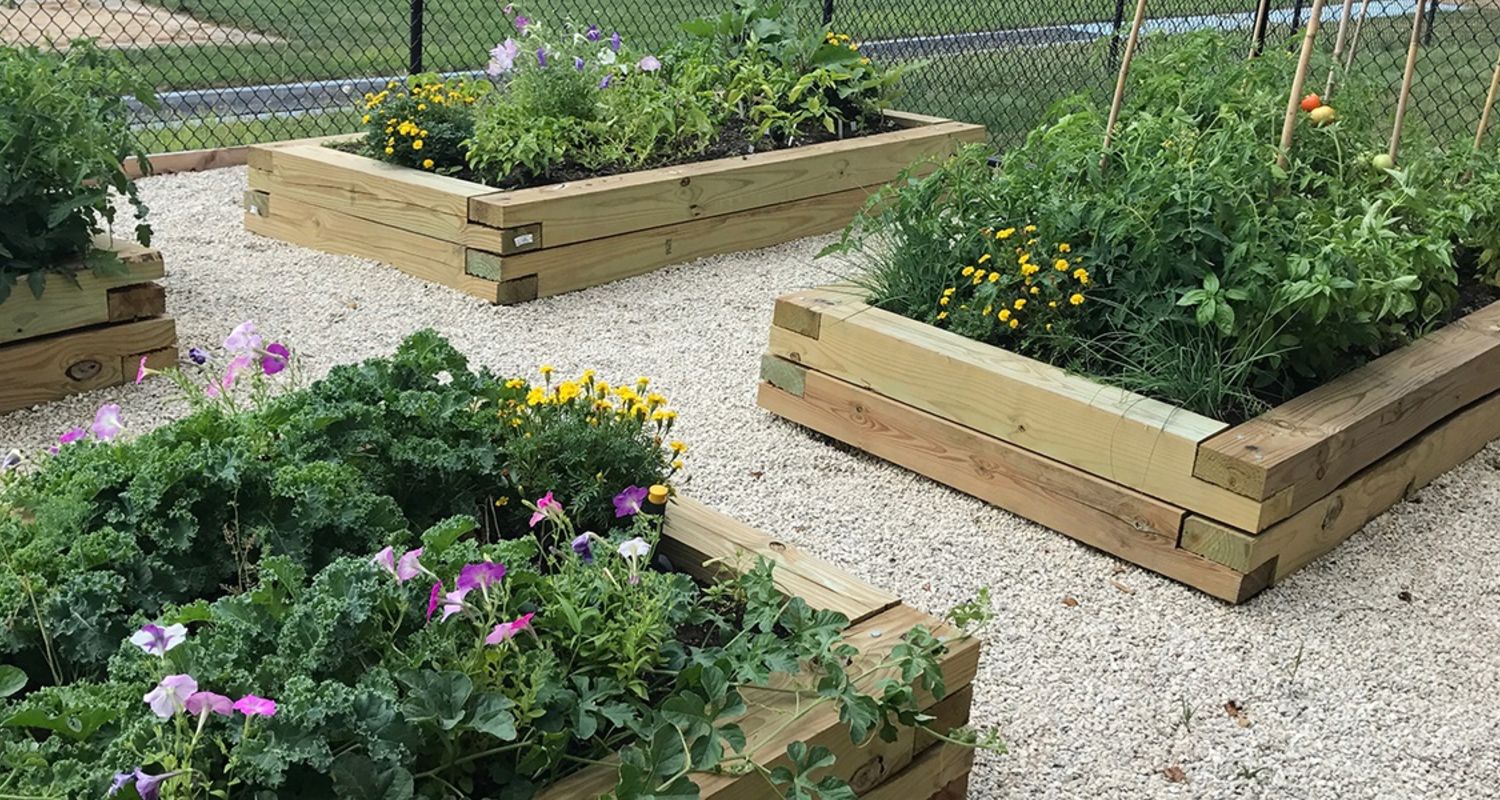Written By: Eryn Gebacz
∫⁄¡œ≥‘πœÕ¯‚Äôs DeWeese Health Center is on a mission to create a culture of wellness on campus that incorporates body, mind, spirit and financial well-being, as well as a sense of community. To this end, the DeWeese Health Center‚Äôs Wellness Committee recently accomplished one of its wellness initiatives of creating a community garden focused on growing fresh produce, learning best-practice gardening techniques and managing stress through connection with nature.
Serving on the committee are wellness ambassador Danielle Romig; health educator Sierra Baker; Adel Hanna, M.D.; nurse practitioner Holly Allison; psychologist Jayita Datta; and Interim Chief University Physician Jennifer D’Abreau, D.O.
The garden is a collaborative effort with help from staff of the ∫⁄¡œ≥‘πœÕ¯ Herrick Conservatory Greenhouse, DeWeese Health Center and the Office of Sustainability. Through this collaborative effort, ∫⁄¡œ≥‘πœÕ¯ employees planted and maintained the garden throughout the growing season.
The garden is located behind the DeWeese Health Center, which Dr. D‚ÄôAbreau says is the perfect location. She was inspired by the garden at the ∫⁄¡œ≥‘πœÕ¯ Women‚Äôs Center, and she wanted to see what she could do to create a community garden.
“The garden needed to be esthetically pleasing,” Dr. D’Abreau says. “We found that this location was near a water supply in the back of the DeWeese Health Center, and there was already a fence, natural sunlight and the space avoided utilities.”

∫⁄¡œ≥‘πœÕ¯‚Äôs Facilities Planning and Operations office had to ensure there were no pipes before planting began, and initially the beds were not deep enough, so they had to go back and make them deeper.
The garden has eight raised beds. Health center staff maintain three of them, and the other five are maintained by Melissa Davis, horticultural facilities director for the Department of Biological Sciences, and ∫⁄¡œ≥‘πœÕ¯ students.
Tom Euclide, associate vice president for facilities planning and operations, piloted the project, and the Office of the University Architect designed the 4-by-8 raised bed layout. The garden was centered on the idea of companion planting, where different crops are planted next to each other in order to increase crop productivity.
“There were different themes for each of the raised beds, but all of them had the commonality of companion planting,” Ms. Davis says. “We planted tomatoes, peppers, cucumbers, pumpkins, gourds, strawberries, okra and marigolds.”
The gardens have started off on a small scale with several little community gardens across campus. Ms. Davis shares her hopes for future expansion and creating learning gardens.
“A learning garden is where students can learn basic principles behind gardening and companion planting,” Ms. Davis says. “Students can learn firsthand gardening skills that they can take home and use in their yards and communities.”
∫⁄¡œ≥‘πœÕ¯‚Äôs Sustainability Manager Melanie Knowles shared how gardens such as the one at the DeWeese Health Center offer multiple benefits to the Kent Campus.
“There’s the benefit of reducing food miles for the environment, the option of eating fresh, local produce and the affordability of this produce compared to others,” Ms. Knowles says.
Dr. D‚ÄôAbreau says there‚Äôs a lot of space yet to be used within the garden and her hopes for the future are to be able to grow and produce more food for the ∫⁄¡œ≥‘πœÕ¯ community.
‚ÄúI wish we had enough food so that we could donate it to the food pantry on campus and for those who are food insecure,‚Äù Dr. D‚ÄôAbreau says. ‚ÄúThere are a lot of ∫⁄¡œ≥‘πœÕ¯ students and employees who are food insecure, and we have so much land and space we can use in order to produce food for them to have.‚Äù
The wellness committee is hoping to begin planting and preparing the beds early this year, so the plants will have a longer time to grow and produce.
“It’s important to have gardens like these on campus for educational purposes, beautifying campus, providing fresh produce, working together to achieve goals and producing locally grown produce,” Ms. Davis says.
LEARN MORE ABOUT UNIVERSITY HEALTH SERVICE’S HEALTH EDUCATION AND WELLNESS INITIATIVES

